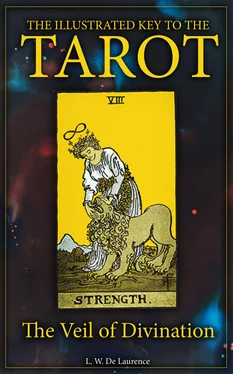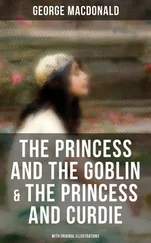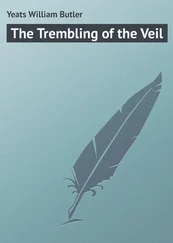12. The Hanged Man. This is the symbol which is supposed to represent Prudence, and Eliphas Lévi says, in his most shallow and plausible manner, that it is the adept bound by his engagements. The figure of a man is suspended head-downwards from a gibbet, to which he is attached by a rope about one of his ankles. The arms are bound behind him and one leg is crossed over the other. According to another, and indeed the prevailing interpretation, he signifies sacrifice, but all current meanings attributed to this card are cartomancists' intuitions, apart from any real value, on the symbolical side. The fortune-tellers of the eighteenth century who circulated Tarots, depict a semi-feminine youth in jerkin, poised erect on one foot and loosely attached to a short stake driven into the ground.
13. Death. The method of presentation is almost invariable, and embodies a bourgeois form of symbolism. The scene is the field of life, and amidst ordinary rank vegetation there are living arms and heads protruding from the ground. One of the heads is crowned, and a skeleton with a great scythe is in the act of mowing it. The transparent and unescapable meaning is death, but the alternatives allocated to the symbol are change and transformation. Other heads have been swept from their place previously, but it is, in its current and patent meaning, more especially a card of the death of Kings. In the exotic sense it has been said to signify the ascent of the spirit in the divine spheres, creation and destruction, perpetual movement, and so forth.
14. Temperance. The winged figure of a female—who, in opposition to all doctrine concerning the hierarchy of angels, is usually allocated to this order of ministering spirits—is pouring liquid from one pitcher to another. In his last work on the Tarot, Dr. Papus abandons the traditional form and depicts a woman wearing an Egyptian head-dress. The first thing which seems clear on the surface is that the entire symbol has no especial connection with Temperance, and the fact that this designation has always obtained for the card offers a very obvious instance of a meaning behind meaning, which is the title in chief to consideration in respect of the Tarot as a whole.
15. The Devil. In the eighteenth century this card seems to have been rather a symbol of merely animal impudicity. Except for a fantastic head-dress, the chief figure is entirely naked; it has bat-like wings, and the hands and feet are represented by the claws of a bird. In the right hand there is a scepter terminating in a sign which has been thought to represent fire. The figure as a whole is not particularly evil; it has no tail, and the commentators who have said that the claws are those of a harpy have spoken at random. There is no better ground for the alternative suggestion that they are eagle's claws. Attached, by a cord depending from their collars, to the pedestal on which the figure is mounted, are two small demons, presumably male and female. These are tailed but not winged. Since 1856 the influence of Eliphas Lévi and his doctrine of occultism has changed the face of this card, and it now appears as a pseudo-Baphometic figure with the head of a goat and a great torch between the horns; it is seated instead of erect, and in place of the generative organs there is the Hermetic caduceus. In Le Tarot Divinatoire of Papus the small demons are replaced by naked human beings, male and female, who are yoked only to each other. The author may be felicitated on this improved symbolism.
16. The Tower struck by Lightning. Its alternative titles are: Castle of Plutus, God's (Nature's) House and the Tower of Babel. In the last case, the figures falling therefrom are held to be Nimrod and his minister. It is assuredly a card of confusion, and the design corresponds, broadly speaking, to any of the designations except Maison Dieu , unless we are to understand that the House of God (Nature) has been abandoned and the veil of the temple rent. It is a little surprising that the device has not so far been allocated to the destruction of Solomon's Temple, when the lightning would symbolize the fire and sword with which that edifice was visited by the King of the Chaldees.
17. The Star , Dog-Star, or Sirius, also called fantastically the Star of the Magi. Grouped about it are seven minor luminaries, and beneath it is a naked female figure, with her left knee upon the earth and her right foot upon the water. She is in the act of pouring fluids from two vessels. A bird is perched on a tree near her; for this a butterfly on a rose has been substituted in some later cards. So also the Star has been called that of Hope. This is one of the cards which Court de Gebelin describes as wholly Egyptian—that is to say, in his own reverie.
18. The Moon. Some eighteenth-century cards show the luminary on its waning side; in the debased edition of Etteilla, it is the moon at night in her plenitude, set in a heaven of stars; of recent years the moon is shown on the side of her increase. In nearly all presentations she is shining brightly and shedding the moisture of fertilizing dew in great drops. Beneath there are two towers, between which a path winds to the verge of the horizon. Two dogs, or alternatively a wolf and dog, are baying at the moon, and in the foreground there is water, through which a crayfish moves towards the land.
19. The Sun. The luminary is distinguished in older cards by chief rays that are waved and salient alternately and by secondary salient rays. It appears to shed its influence on earth not only by light and heat, but—like the moon—by drops of dew. Court de Gebelin termed these tears of gold and of pearl just as he identified the lunar dew with the tears of Isis . Beneath the dog-star there is a wall suggesting an enclosure—as it might be, a walled garden—wherein are two children, either naked or lightly clothed, facing a water, and gambolling, or running hand in hand. Eliphas Lévi says that these are sometimes replaced by a spinner unwinding destinies, and otherwise by a much better symbol—a naked child mounted on a white horse and displaying a scarlet standard.
20. The Last Judgment. I have spoken of this symbol already, the form of which is essentially invariable, even in the Etteilla set. An angel sounds his trumpet per sepulchra regionum , and the dead arise. It matters little that Etteilla omits the angel, or that Dr. Papus substitutes a ridiculous figure, which is, however, in consonance with the general motive of that Tarot set which accompanies his latest work. Before rejecting the transparent interpretation of the symbolism which is conveyed by the name of the card and by the picture which it presents to the eye, we should feel very sure of our ground. On the surface, at least, it is and can be only the resurrection of that triad—father, mother, child—whom we have met with already in the eighth card. M. Bourgeat hazards the suggestion that esoterically it is the symbol of evolution—of which it carries none of the signs. Others say that it signifies renewal, which is obvious enough; that it is the triad of human life; that it is the "generative force of the earth ... and eternal life." Court de Gebelin makes himself impossible as usual, and points out that if the grave-stones were removed it could be accepted as a symbol of creation.
21—which, however, in most of the arrangements is the cipher card, number nothing— The Fool, Mate, or Unwise Man . Court de Gebelin places it at the head of the whole series as the zero or negative which is pre-supposed by numeration, and as this is a simpler so also it is a better arrangement. It has been abandoned because in later times the cards have been attributed to the letters of the Hebrew alphabet, and there has been apparently some difficulty about allocating the zero symbol satisfactorily in a sequence of letters all of which signify numbers. In the present reference of the card to the letter Shin , which corresponds to 200, the difficulty or the unreason remains. The truth is that the real arrangement of the cards has never transpired. The Fool carries a wallet; he is looking over his shoulder and does not know that he is on the brink of a precipice; but a dog or other animal—some call it a tiger—is attacking him from behind, and he is hurried to his destruction unawares. Etteilla has given a justifiable variation of this card—as generally understood—in the form of a court jester, with cap, bells and motley garb. The other descriptions say that the wallet contains the bearer's follies and vices, which seems bourgeois and arbitrary.
Читать дальше











